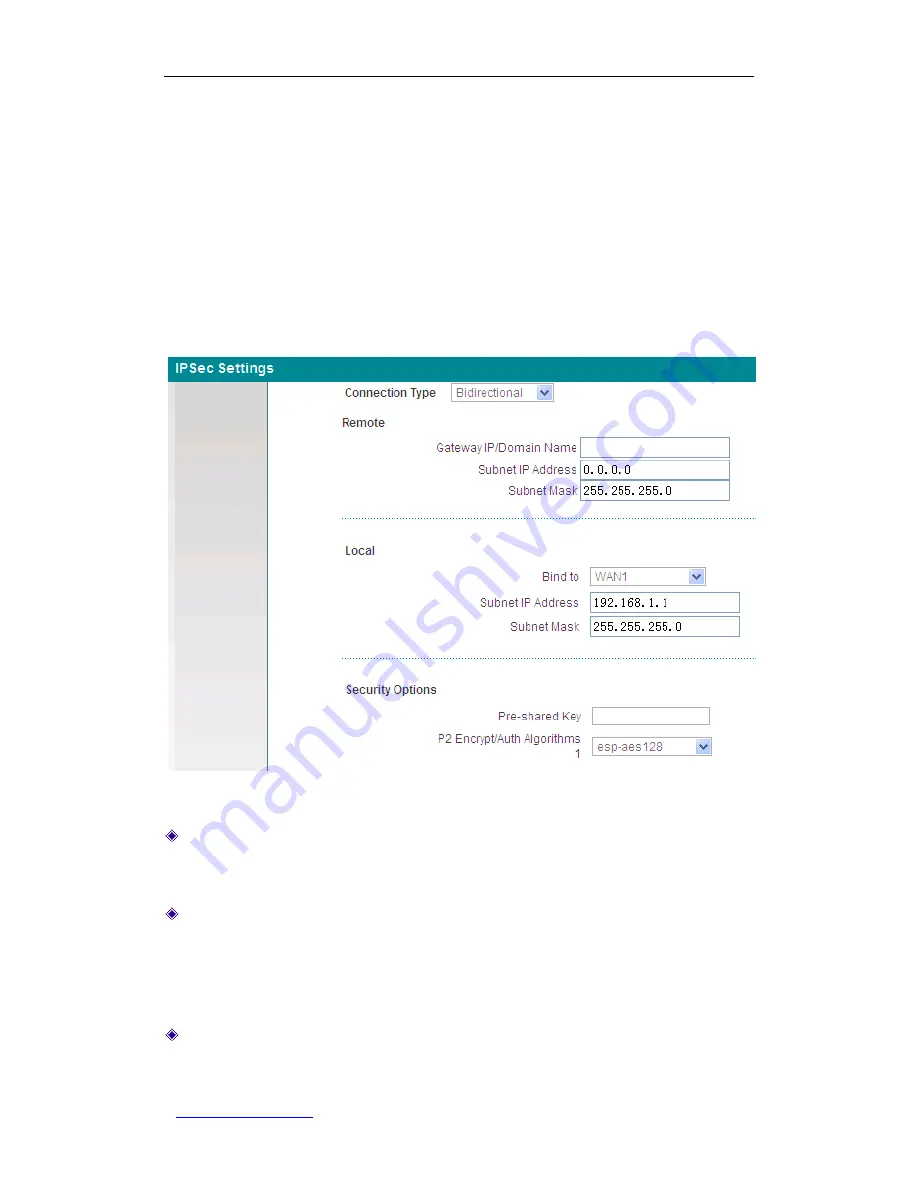
UTT Technologies Chapter 12 VPN
http://www.uttglobal.com
Page 229
and then describe the advanced parameters for them.
1. Basic Parameters Settings
1) Bidirectional (Gateway-to-Gateway IPSec VPN)
If both IPSec endpoints have static IP addresses, you can choose
Bidirectional
as
the connection type (see
Figure 12-22 IPSec Settings (AutoKey (IKE)
– Bidirectional)
).
In this case, the local UTT VPN gateway can act as an initiator or responder; and neither
local ID nor remote ID is required.
Figure 12-22 IPSec Settings (AutoKey (IKE)
– Bidirectional)
Connection Type:
It specifies the role of the UTT VPN gateway in the IPSec tunnel
establishment. The available options are
Bidirectional
,
Originate-Only
and
Answer-Only
. Here please select
Bidirectional
.
Gateway IP/Domain Name (Remote):
It specifies the IP address or domain name of
the device at the other end of the IPSec tunnel. Note: If you enter a domain name,
you should configure at least one DNS server on the UTT VPN gateway. Then the
UTT VPN gateway will periodically resolve the domain name, and renegotiate the
IPSec tunnel if the remote IPSec device’s IP address changes.
Subnet IP
and
Subnet Mask (Remote):
They specify the remote subnet or host that
can be accessed from the local side of the IPSec tunnel. If you want to define a






























